Uncategorized
Crypto Daybook Americas: Recession Concerns Stifle BTC Recovery Prospects, Memecoins Buzz

By Omkar Godbole (All times ET unless indicated otherwise)
Bitcoin (BTC) has found some stability around its 200-day average at about $84,000 after dipping below $77,000 early last week. The broader market recovery was led by memecoins, layer-2 tokens and gaming tokens.
However, maintaining a sustained uptick could still be a challenge, especially since President Donald Trump’s administration appears to have a higher tolerance for market instability than many expected. Just two months ago, when Trump took office, the crypto market was buzzing with optimism that any turbulence created by tariffs would lead to prompt policy support from the White House.
That optimism seems to have been misplaced. Over the weekend, Treasury Secretary Scott Bessent said corrections are healthy and normal, a hint that the anticipated «Trump put» might take longer to materialize than traders hoped.
More importantly, on NBC News’ «Meet the Press» on Sunday, Bessent did not rule out the possibility of a recession. This starkly contrasts with government officials’ typical attitude of emphasizing «glass half full» perspective when the going gets tough.
It could mean Trump isn’t ready to back down from his tariff fight just yet, keeping risk assets feeling uneasy. If stock prices continue to fall, it’s hard to imagine bitcoin staying resilient for long, especially given the lack of uplifting narratives in the crypto market.
«It’s just a guess, but I doubt Trump will reverse course on tariffs and his drive to bring U.S. manufacturing back at these price levels,» Greg Magadini, director of derivatives at Amberdata, shared in an email. «I can’t picture a scenario where risk assets crash and crypto remains unaffected, or where the VIX increases and crypto’s implied volatility doesn’t follow suit.»
Plus, sentiment is deteriorating on Main Street, which could add to the recent risk aversion in both the crypto and traditional markets. A chart shared on X by Otavio Costa, a macro strategist at Crescat’s Capital, highlights a record number of U.S. consumers expecting conditions to worsen over the next year (see Chart of the Day, below).
The focus on macro means traders will follow Wednesday’s Fed meeting for cues on the central bank’s readiness to deploy stimulus. The bar is low after Chairman Powell said the bank is in a wait-and-watch mode to assess the impact of Trump’s policies before cutting rates.
In other news, Aave Labs’s Founder, Stani Kulechov, confirmed that the Aave decentralized autonomous organization had reached a clear consensus against introducing a new token for Horizon, an Aave initiative to integrate real-world assets into decentralized finance.
Trump is reportedly going to talk to Russian President Vladimir Putin about ending the Ukraine war. Digital asset prime broker FalconX said it had completed the “first-ever” block trade in CME’s SOL futures with StoneX as counterparty. Stay alert!
What to Watch
Crypto:
March 17: CME Group launches solana (SOL) futures.
March 17: Ethereum (ETH) testnet Hoodi goes live.
March 18: Zano (ZANO) hard fork network upgrade; this activates “ETH Signature support for off-chain signing and asset operations.”
March 20: Pascal hard fork network upgrade goes live on the BNB Smart Chain (BSC) mainnet.
March 21, 1:00 p.m.: The SEC’s Crypto Task Force hosts a roundtable, open to the public, that will focus on the definition of a security.
March 24 (before market open): Bitcoin miner CleanSpark (CLSK) will join the S&P SmallCap 600 index.
March 24, 11:00 a.m.: Bugis network upgrade goes live on Enjin Matrixchain mainnet.
March 25: The Mimir upgrade goes live on Chromia (CHR) mainnet.
Macro
March 17, 8:30 a.m.: The U.S. Census Bureau releases February sales data.
Retail Sales MoM Est. 0.7% vs. Prev. -0.9%
Retail Sales YoY Prev. 4.2%
March 18, 8:30 a.m.: Statistics Canada releases February consumer price index (CPI) data.
Core Inflation Rate MoM Prev. 0.4%
Core Inflation Rate YoY Prev. 2.1%
Inflation Rate MoM Est. 0.6% vs. Prev. 0.1%
Inflation Rate YoY Est. 2.1% vs. Prev. 1.9%
March 18, 8:30 a.m.: The U.S. Census Bureau releases February residential construction data.
Housing Starts Est. 1.375M vs. Prev. 1.366M
March 18, 11:00 p.m.: The Bank of Japan (BoJ) releases its Statement on Monetary Policy.
Interest Rate Decision Est. 0.5% vs. Prev. 0.5%
March 19, 6:00 a.m.: Eurostat releases (final) February eurozone consumer price index (CPI) data.
Core Inflation Rate YoY Est. 2.6% vs. Prev. 2.7%
Inflation Rate MoM Est. 0.5% vs. Prev. -0.3%
Inflation Rate YoY Est. 2.4% vs. Prev. 2.5%
March 19, 2:00 p.m.: The Federal Reserve announces its interest rate decision. The FOMC press conference is livestreamed 30 minutes later.
Fed Funds Interest Rate Est. 4.5% vs. Prev. 4.5%
March 19, 5:30 p.m.: The Central Bank of Brazil announces its interest rate decision.
Selic Rate Est. 14.25% vs. Prev. 13.25%
Earnings (Estimates based on FactSet data)
March 27: KULR Technology Group (KULR), post-market
March 28: Galaxy Digital Holdings (GLXY), pre-market
Token Events
Governance votes & calls
Aave DAO is discussing the launch of Horizon, a licensed instance of the Aave Protocol to allow institutions to “access permissionless stablecoin liquidity while meeting issuer requirements.”
Balancer DAO is discussing the deployment of Balancer V3 on OP Mainnet.
March 17, 10 a.m.: Jito to hold a Delegate’s Call to discuss JIP-15, JIP-16, and its Tokenomics Report.
March 18, 6 a.m.: Toncoin (TON) to host an Ask Me Anything (AMA) session on its ecosystem expansion.
March 18, 8 a.m.: Binanceto host an AMA session with Binance’s VP of Product Jeff Li and Binance Angel Victor Balaban.
Unlocks
March 18: Fasttoken (FTN) to unlock 4.66% of its circulating supply worth $79.80 million.
March 18: Mantra (OM) to unlock 0.51% of its circulating supply worth $34.1 million.
March 21: Immutable (IMX) to unlock 1.39% of circulating supply worth $14.04 million.
March 23: Metars Genesis (MRS) to unlock 11.87% of its circulating supply worth $96.8’0 million.
March 31: Optimism (OP) to unlock 1.93% of its circulating supply worth $27.31 million.
Token Listings
March 18: Jupiter (JUP) to be listed on Arkham.
March 18: Paws (PAWS) to be listed on Bybit.
March 31: Binance to delist USDT, FDUSD, TUSD, USDP, DAI, AEUR, UST, USTC, and PAXG.
Conferences
CoinDesk’s Consensus is taking place in Toronto on May 14-16. Use code DAYBOOK and save 15% on passes.
March 18-20: Digital Asset Summit 2025 (New York)
March 18-20: Fintech Americas Miami 2025
March 19-20: Next Block Expo (Warsaw)
March 24-26: Merge Buenos Aires
March 25-26: PAY360 2025 (London)
March 25-27: Mining Disrupt (Fort Lauderdale, Fla.)
March 26: Crypto Assets Conference (Frankfurt)
March 26: DC Blockchain Summit 2025 (Washington)
March 26-28: Real World Crypto Symposium 2025 (Sofia, Bulgaria)
March 27: Building Blocks (Tel Aviv)
March 27: Digital Euro Conference 2025 (Frankfurt)
March 27: WIKI Finance EXPO Hong Kong 2025
March 27-28: Money Motion 2025 (Zagreb, Croatia)
March 28: Solana APEX (Cape Town)
Token Talk
By Shaurya Malwa
BNB Chain trading volumes flipped those of Ethereum and Solana over weekend.
Decentralized exchanges (DEX) built on BNB Chain racked up over $1.7 billion in trading volume in each of the past three days as newer memecoins created trading opportunities for traders.
The PancakeSwap DEX processed over $1.2 billion of volume in the past 24 hours, helping to boost CAKE token prices by 30%.
The Mubarak (MUBARAK) memecoin emerged as the token gaining the most attention on X, gaining listings on platforms like Binance Alpha and exchanges such as Bitget on Monday.
It was introduced through the BNB Chain-based Four Meme launchpad on March 13, with an initial market cap as low as $6,000. That soared past $100 million on Sunday. The coin has no inherent utility beyond its meme-driven appeal, typical of many tokens in this category, relying instead on community engagement and speculative trading.
Data from DEXTools shows brisk token issuance activity on BNB Chain as of European morning hours Monday, although most new launches fail to break a $10,000 market capitalization or fall to zero as their creators pull liquidity from trading pools.
Meanwhile, BNB Chain’s BNB has gained 5% in the past 24 hours amid the renewed demand, beating a broader market fall.
Derivatives Positioning
The barely positive BTC and ETH perpetual funding rates signal caution and cast doubt on the price recovery. Several altcoins like XRP, ADA, SOL, DOGE, LINK and TRX are seeing negative rates, indicating a bias for shorts.
BTC, ETH CME futures basis remains low near 5%.
Short and near-dated BTC and ETH puts continue to be pricier than calls.
Top block flows in BTC options on Deribit featured OTM call selling and put buying.
Market Movements:
BTC is down 0.9% from 4 p.m. ET Friday at $83,468.34 (24hrs: -0.23%)
ETH is down 0.67% at $1,910.26 (24hrs: +0.18%)
CoinDesk 20 is down 0.76% at 2,625.62 (24hrs: -0.33%)
Ether CESR Composite Staking Rate is up 3 bps at 2.96%
BTC funding rate is at 0.0075% (8.2% annualized) on Binance
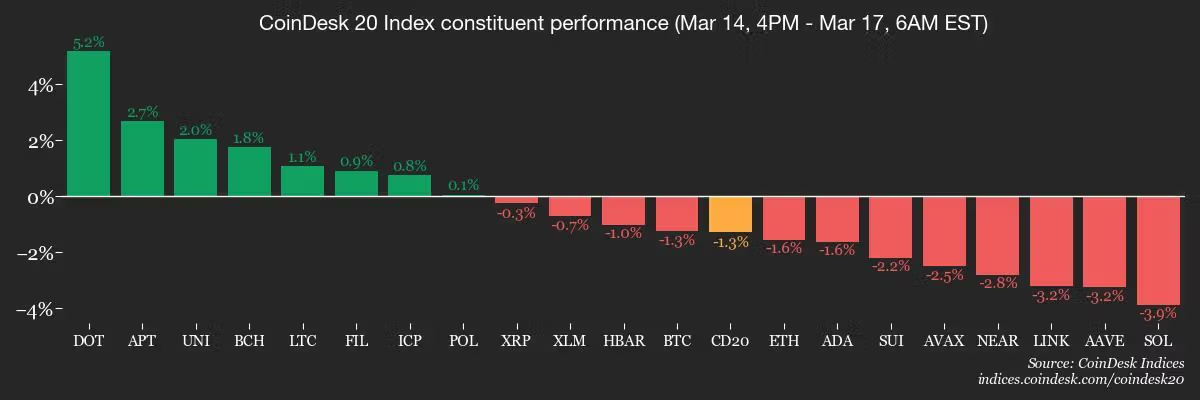
DXY is down 0.14% at 103.57
Gold is unchanged at $2,996.63/oz
Silver is up 0.18% at $33.84/oz
Nikkei 225 closed +0.93% at 37,396.52
Hang Seng closed +0.77% at 24,145.57
FTSE is up 0.21% at 8,650.39
Euro Stoxx 50 is up 0.22% at 5,415.98
DJIA closed on Friday +1.65% at 41,488.19
S&P 500 closed +2.13% at 5,638.94
Nasdaq closed +2.61% at 17,754.09
S&P/TSX Composite Index closed +1.45% at 24,553.40
S&P 40 Latin America closed +3.83% at 2,432.92
U.S. 10-year Treasury rate is down 3 bps at 4.29%
E-mini S&P 500 futures are down 0.35% at 5,672.50
E-mini Nasdaq-100 futures are down 0.31% at 19,858.50
E-mini Dow Jones Industrial Average Index futures are down 0.39% at 41,685.00
Bitcoin Stats:
BTC Dominance: 61.60 (-0.25%)
Ethereum to bitcoin ratio: 0.02289 (0.18%)
Hashrate (seven-day moving average): 815 EH/s
Hashprice (spot): $47.38
Total Fees: 5.22 BTC / $436,428
CME Futures Open Interest: 149,470 BTC
BTC priced in gold: 27.6 oz
BTC vs gold market cap: 7.84%
Technical Analysis

The bitcoin-gold ratio has collapsed to levels last seen in early November. The slide has penetrated the ratio’s March 2024 high, flipping it into a resistance level.
The 50-day SMA has peaked and is also trending south, looking to move below the 200-day SMA in a so-called death cross. That would signal a prolonged gold outperformance relative to bitcoin.
Crypto Equities
Strategy (MSTR): closed on Friday at $297.49 (+13%), down 1.91% at $291.80 in pre-market
Coinbase Global (COIN): closed at $183.12 (+3.17%), down 0.63% at $181.97
Galaxy Digital Holdings (GLXY): closed at C$17.98 (+8.18%)
MARA Holdings (MARA): closed at $13.18 (+8.39%), down 0.68% at $13.09
Riot Platforms (RIOT): closed at $7.82 (+6.98%), down 0.77% at $7.76
Core Scientific (CORZ): closed at $8.81 (+1.73%), down 1.14% at $8.71
CleanSpark (CLSK): closed at $7.97 (+3.64%), down 1.25% at $7.87
CoinShares Valkyrie Bitcoin Miners ETF (WGMI): closed at $15.30 (+5.01%)
Semler Scientific (SMLR): closed at $34.35 (+5.3%), down 0.79% at $34.08
Exodus Movement (EXOD): closed at $28.05 (+7.55%), down 7.27% at $26.01
ETF Flows
Spot BTC ETFs:
Daily net flow: -$59.2 million
Cumulative net flows: $35.29 billion
Total BTC holdings ~ 1,118 million.
Spot ETH ETFs
Daily net flow: -$46.9 million
Cumulative net flows: $2.53 billion
Total ETH holdings ~ 3.521 million.
Source: Farside Investors
Overnight Flows
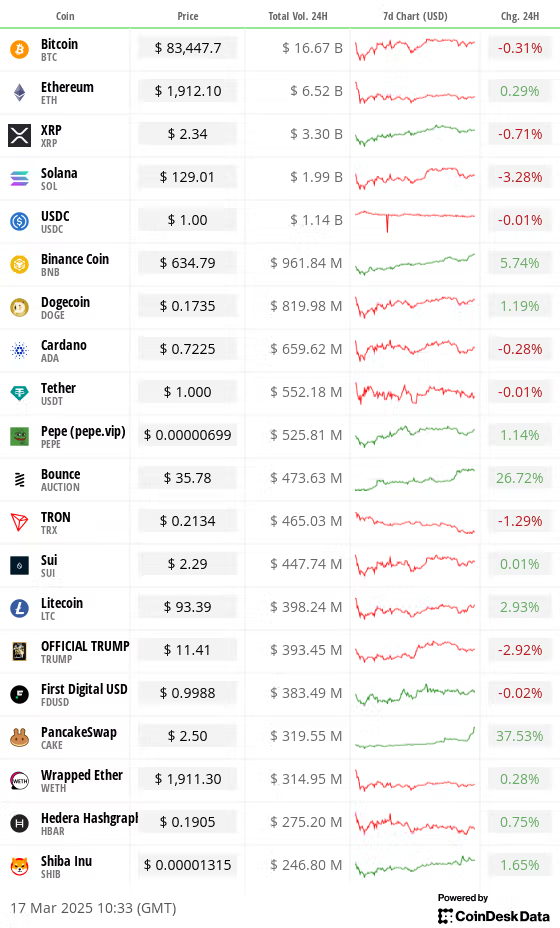
Chart of the Day
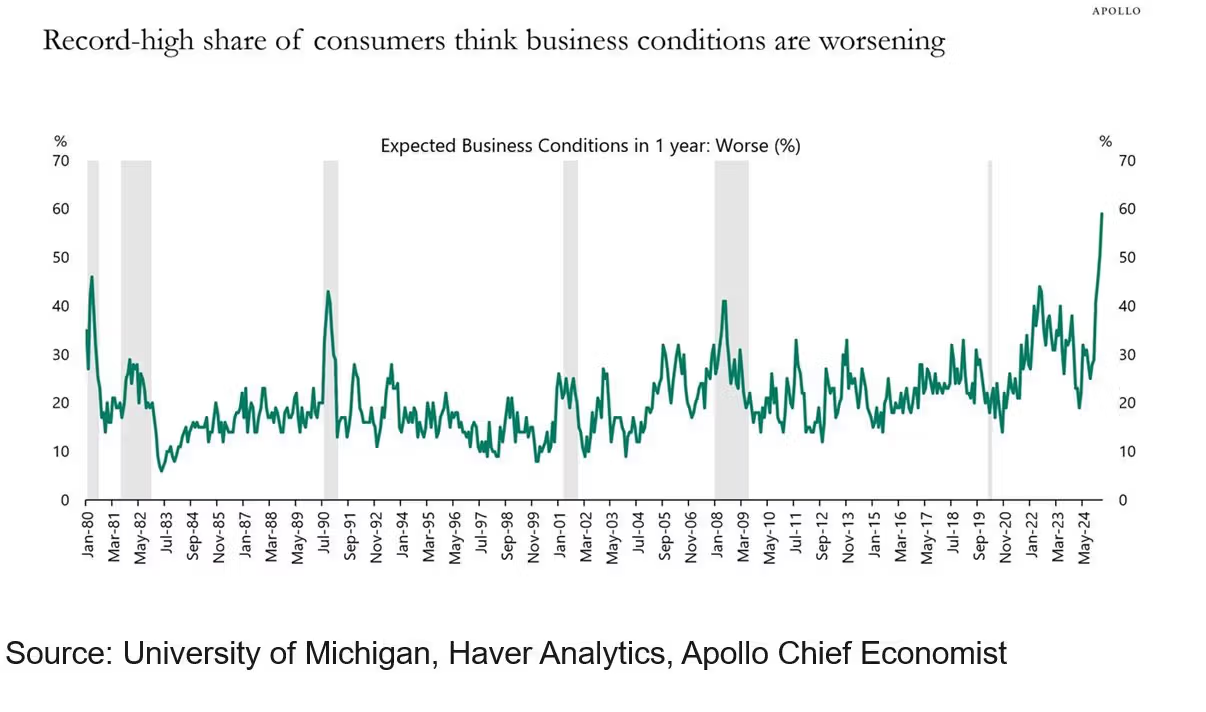
The share of U.S. consumers expecting business conditions to worsen in the months ahead has hit a record high.
The development points to a tough time for risk and growth-sensitive assets.
While You Were Sleeping
Bank of Korea Declines Bitcoin for Foreign Exchange Reserves Amid Volatility Concerns (Business Korea): The central bank said bitcoin is unsuitable as a reserve asset due to its price swings, limited liquidity, lack of convertibility and failure to meet investment-grade credit criteria.
OKX Suspends DEX Aggregator as It ‘Works Diligently’ to Upgrade Security (CoinDesk): The firm paused its decentralized exchange aggregator to implement tagging and security upgrades amid EU scrutiny over potential misuse, which it denies.
Trump Says He Will Talk to Putin on Tuesday to Discuss Ukraine (The New York Times): Trump said he will discuss land and power plants in the March 18 call. He sees «a very good chance» of a 30-day Russia-Ukraine ceasefire .
Trade War With Europe Puts $9.5 Trillion at Risk, U.S. Firms Say (The Wall Street Journal): The American Chamber of Commerce said a trade war could hurt transatlantic investments and lead to EU retaliation against U.S. service exports.
Kraken to Offer Superfast Trading With Planned Launch of Colocation Service (CoinDesk): Kraken said the service will be «accessible to all partners and clients, not just institutions.» Traders in London can expect sub-millisecond latency.
UBS Boosts Gold Target to $3,200 as Trade Risks Stay Elevated (Bloomberg): The firm’s analysts raised their one-year gold forecast, citing international trade tensions and rising U.S. recession risks as key drivers of investor demand.
In the Ether


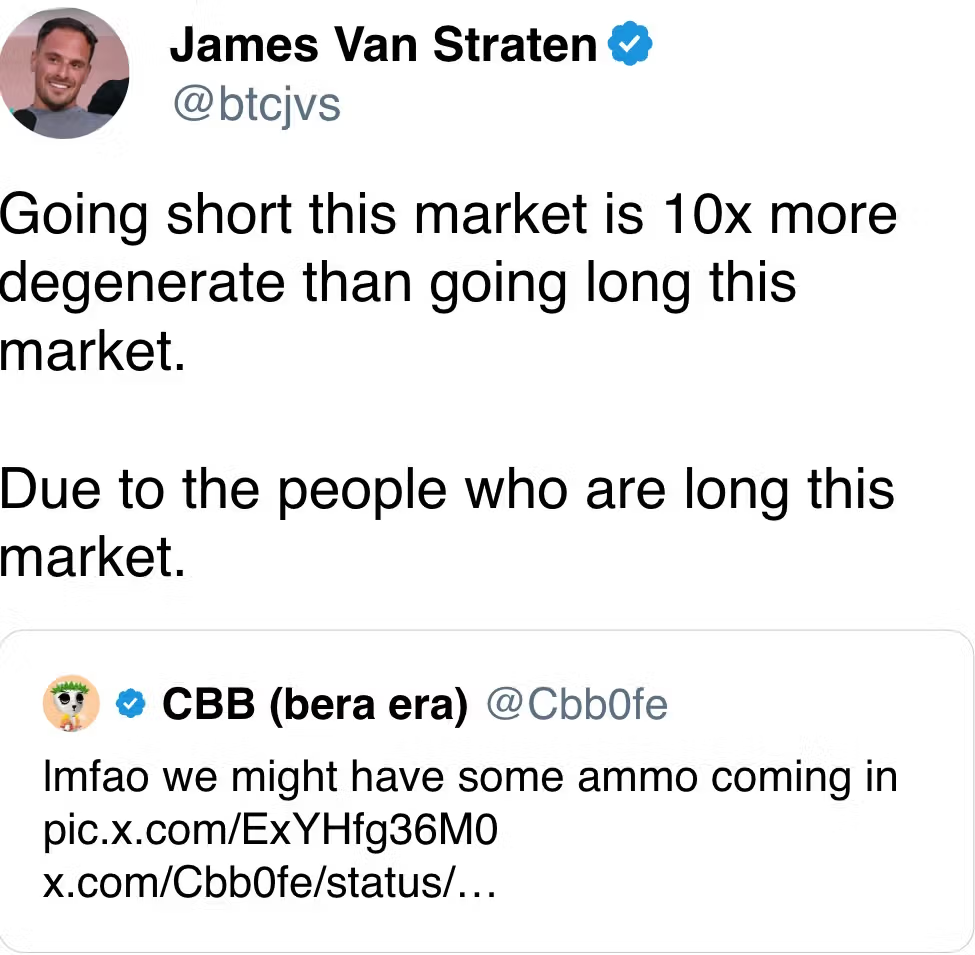
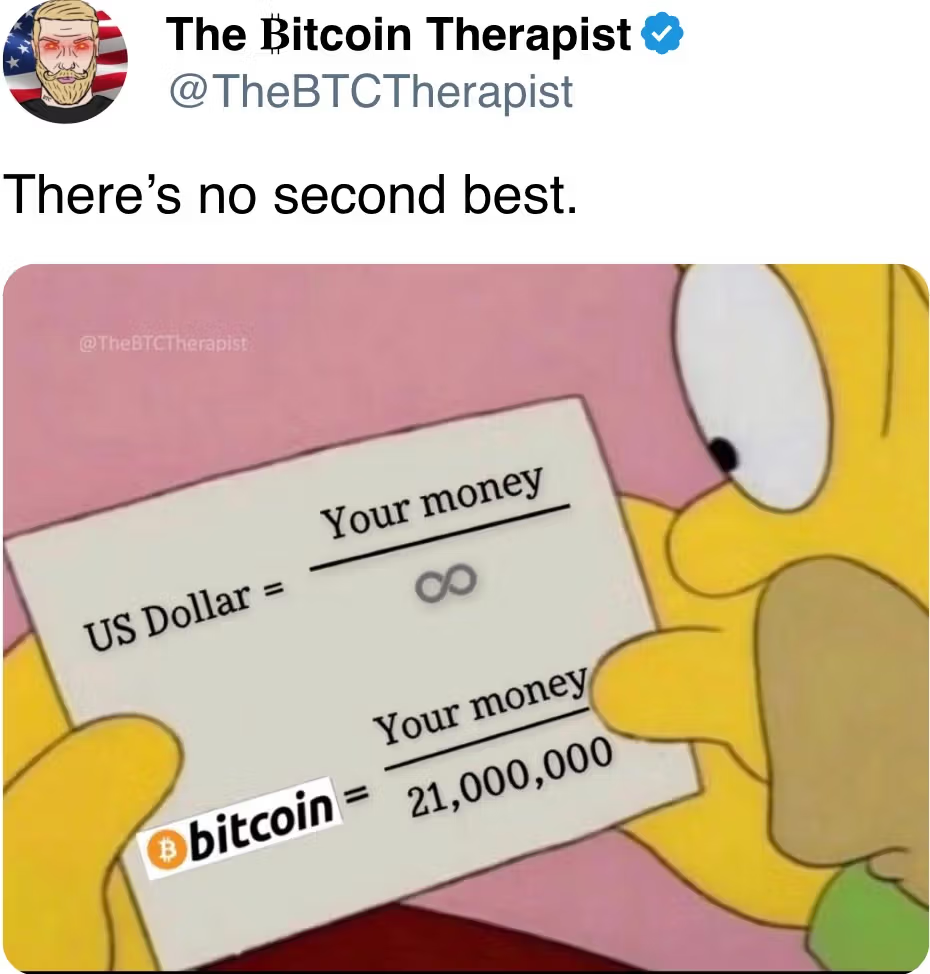
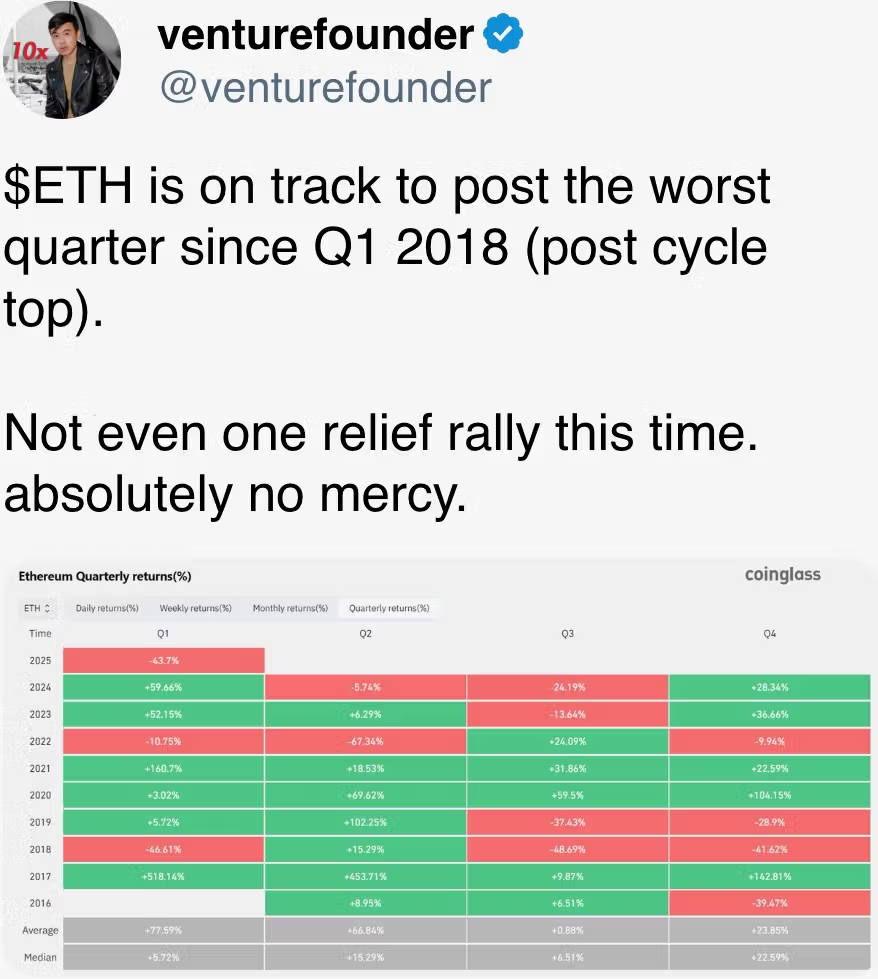
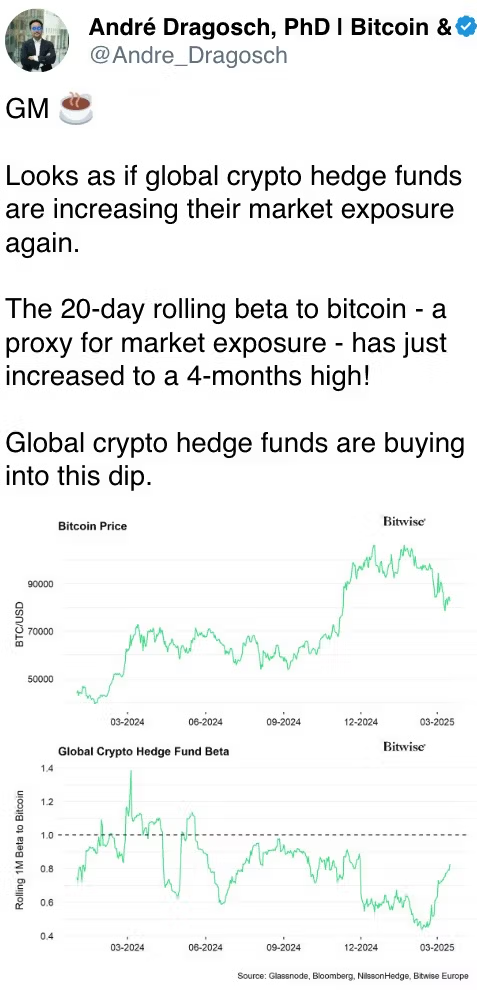
Business
Crypto Trading Firm Keyrock Buys Luxembourg’s Turing Capital in Asset Management Push

Crypto trading firm Keyrock said it’s expanding into asset and wealth management by acquiring Turing Capital, a Luxembourg-registered alternative investment fund manager.
The deal, announced on Tuesday, marks the launch of Keyrock’s Asset and Wealth Management division, a new business unit dedicated to institutional clients and private investors.
Keyrock, founded in Brussels, Belgium and best known for its work in market making, options and OTC trading, said it will fold Turing Capital’s investment strategies and Luxembourg fund management structure into its wider platform. The division will be led by Turing Capital co-founder Jorge Schnura, who joins Keyrock’s executive committee as president of the unit.
The company said the expansion will allow it to provide services across the full lifecycle of digital assets, from liquidity provision to long-term investment strategies. «In the near future, all assets will live onchain,» Schnura said, noting that the merger positions the group to capture opportunities as traditional financial products migrate to blockchain rails.
Keyrock has also applied for regulatory approval under the EU’s crypto framework MiCA through a filing with Liechtenstein’s financial regulator. If approved, the firm plans to offer portfolio management and advisory services, aiming to compete directly with traditional asset managers as well as crypto-native players.
«Today’s launch sets the stage for our longer-term ambition: bringing asset management on-chain in a way that truly meets institutional standards,» Keyrock CSO Juan David Mendieta said in a statement.
Read more: Stablecoin Payments Projected to Top $1T Annually by 2030, Market Maker Keyrock Says
Business
Crypto Trading Firm Keyrock Buys Luxembourg’s Turing Capital in Asset Management Push

Crypto trading firm Keyrock said it’s expanding into asset and wealth management by acquiring Turing Capital, a Luxembourg-registered alternative investment fund manager.
The deal, announced on Tuesday, marks the launch of Keyrock’s Asset and Wealth Management division, a new business unit dedicated to institutional clients and private investors.
Keyrock, founded in Brussels, Belgium and best known for its work in market making, options and OTC trading, said it will fold Turing Capital’s investment strategies and Luxembourg fund management structure into its wider platform. The division will be led by Turing Capital co-founder Jorge Schnura, who joins Keyrock’s executive committee as president of the unit.
The company said the expansion will allow it to provide services across the full lifecycle of digital assets, from liquidity provision to long-term investment strategies. «In the near future, all assets will live onchain,» Schnura said, noting that the merger positions the group to capture opportunities as traditional financial products migrate to blockchain rails.
Keyrock has also applied for regulatory approval under the EU’s crypto framework MiCA through a filing with Liechtenstein’s financial regulator. If approved, the firm plans to offer portfolio management and advisory services, aiming to compete directly with traditional asset managers as well as crypto-native players.
«Today’s launch sets the stage for our longer-term ambition: bringing asset management on-chain in a way that truly meets institutional standards,» Keyrock CSO Juan David Mendieta said in a statement.
Read more: Stablecoin Payments Projected to Top $1T Annually by 2030, Market Maker Keyrock Says
Business
Gemini Shares Slide 6%, Extending Post-IPO Slump to 24%
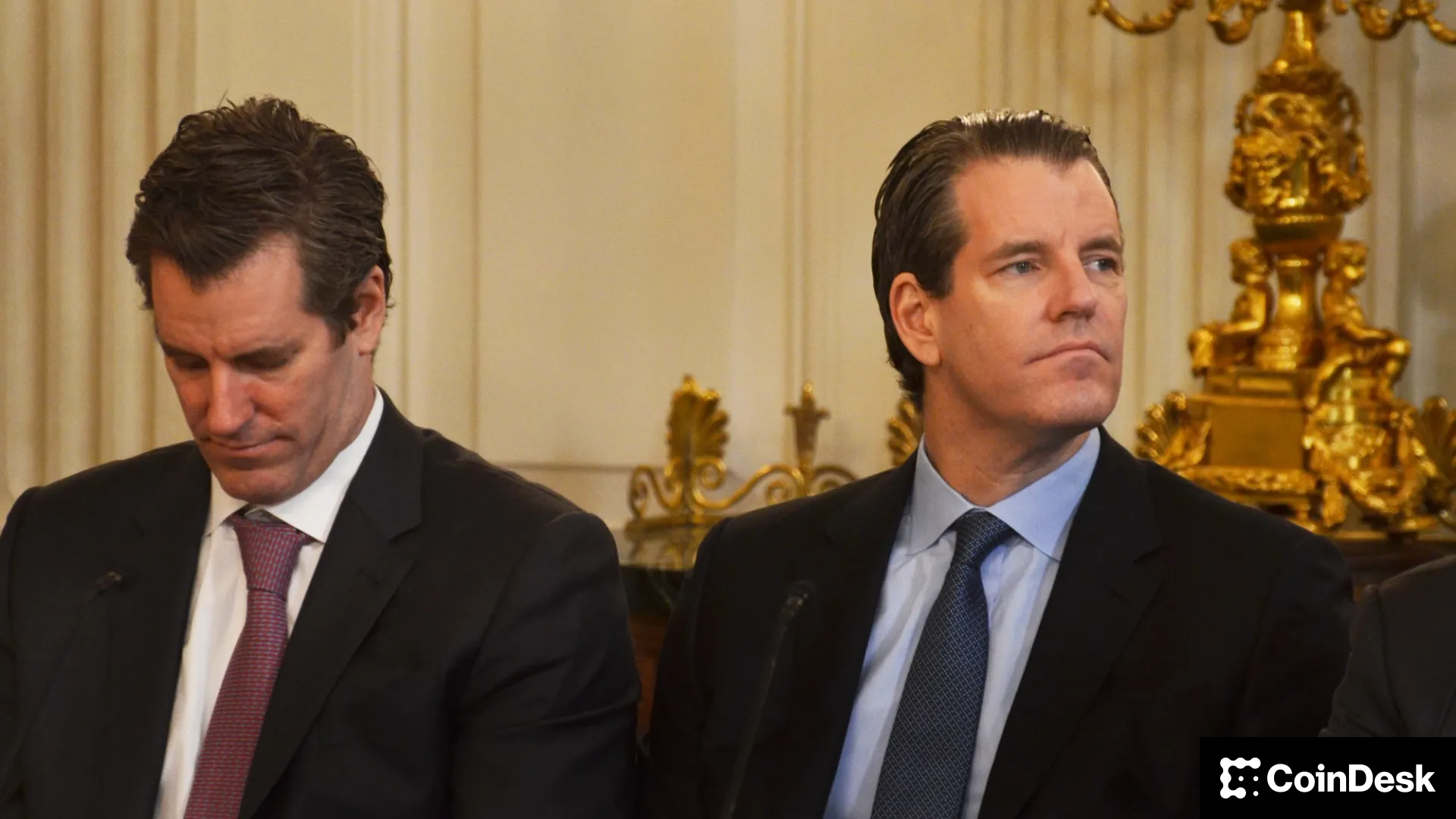
Gemini Space Station (GEMI), the crypto exchange founded by Cameron and Tyler Winklevoss, has seen its shares tumble by more than 20% since listing on the Nasdaq last Friday.
The stock is down around 6% on Tuesday, trading at $30.42, and has dropped nearly 24% over the past week. The sharp decline follows an initial surge after the company raised $425 million in its IPO, pricing shares at $28 and valuing the firm at $3.3 billion before trading began.
On its first day, GEMI spiked to $45.89 before closing at $32 — a 14% premium to its offer price. But since hitting that high, shares have plunged more than 34%, erasing most of the early enthusiasm from public market investors.
The broader crypto equity market has remained more stable. Coinbase (COIN), the largest U.S. crypto exchange, is flat over the past week. Robinhood (HOOD), which derives part of its revenue from crypto, is down 3%. Token issuer Circle (CRCL), on the other hand, is up 13% over the same period.
Part of the pressure on Gemini’s stock may stem from its financials. The company posted a $283 million net loss in the first half of 2025, following a $159 million loss in all of 2024. Despite raising fresh capital, the numbers suggest the business is still far from turning a profit.
Compass Point analyst Ed Engel noted that GEMI is currently trading at 26 times its annualized first-half revenue. That multiple — often used to gauge whether a stock is expensive — means investors are paying 26 dollars for every dollar the company is expected to generate in sales this year. For a loss-making company in a volatile sector, that’s a steep price, and could be fueling investor skepticism.
-

 Business11 месяцев ago
Business11 месяцев ago3 Ways to make your business presentation more relatable
-

 Fashion11 месяцев ago
Fashion11 месяцев agoAccording to Dior Couture, this taboo fashion accessory is back
-

 Entertainment11 месяцев ago
Entertainment11 месяцев ago10 Artists who retired from music and made a comeback
-

 Entertainment11 месяцев ago
Entertainment11 месяцев ago\’Better Call Saul\’ has been renewed for a fourth season
-

 Entertainment11 месяцев ago
Entertainment11 месяцев agoNew Season 8 Walking Dead trailer flashes forward in time
-

 Business11 месяцев ago
Business11 месяцев ago15 Habits that could be hurting your business relationships
-

 Entertainment11 месяцев ago
Entertainment11 месяцев agoMeet Superman\’s grandfather in new trailer for Krypton
-

 Entertainment11 месяцев ago
Entertainment11 месяцев agoDisney\’s live-action Aladdin finally finds its stars




